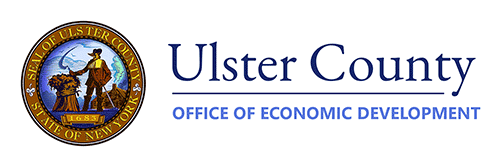Technological advancements driving innovation can be a blessing and a curse for startups

The blessing is that leveraging advanced technologies such as Artificial Intelligence and Blockchain can create a competitive advantage that can help a startup capture market share that will fuel the company's high growth strategy. This is certainly something that investors look for. Investors will also want to see that these innovations are protected through Intellectual Property (IP) such as patents and trademarks. This can be both expensive and challenging for startups.
The legal costs associated with filing numerous patents can be significant, tens of thousands of dollars. That does not sound like a lot of money, but it is for an early-stage startup that needs to ask friends and family to invest to cover these expenses. The challenging part is that the patents must be written very carefully to ensure that the claims in the patent can not be easily circumvented by competition.
Another challenge is that large competitors can ignore the patent and wait for the startup to defend itself. This requires even more money, and in most cases, the early-stage startup cannot afford to defend the patent from some competitor with deeper pockets. Wait - am I describing the blessings here? That sounds like it should be in the curse section below.
Now the curse. Assume all the challenges above are met. Even then, being on the leading edge of technology can actually kill a company. This can happen in two ways that are both related to the adoption of innovation. The first way is being too early for a market. The market as a whole is just not ready for the innovation.
Ever heard of the Xerox Alto? It was the first personal computer developed in 1973, but the market was not ready. No one had heard of a personal computer, and it was difficult to understand what it could be used for. Even four years later, in 1977, Ken Olsen, founder of Digital Equipment Corporation (DEC), famously said, "There is no reason anyone would want a computer in their home."
It was not until the IBM Personal Computer was introduced in 1981 that the market was truly ready. I would not want to be the early-stage startup that invented the equivalent of the Xerox Alto. It would be highly unlikely they could survive the eight years it took for the market to be ready. Not to mention the investors who would have lost their investment in the startup.
The second related reason is called the Adoption of Innovation Curve (see below), also known as the Diffusion of Innovation, as it was first described in the book by that name, authored by Everett Rogers in 1962.
The red line represents how users adopt advanced technologies or innovations. First, the most innovative people adopt it but that is a very small percentage (2.5%) of the market. The startup team must find a way to identify and reach this small market and convince them to adopt their innovation first. That’s not as easy as it sounds. Assuming they are successful, the next challenge is to reach the early adopters (13.5%) and hope they are influenced by the innovators enough that they begin to adopt. It this sounds like it could be a long process, you are right. Hence, the curse. That’s why the blue line representing the startup's market share does not accelerate upward until most of the early majority (34%) have come on board.
From an investor perspective, you should only invest if the startup can survive this long adoption period. This means your investment has to help them survive long enough that the next stage investor gets interested and provides the next round of capital to fund the startup’s progression through this adoption curve.
Hopefully this blessing and curse discussion creates a more balanced perspective for both startups and investors regarding advanced technologies driving innovation.
Tony DiMarco, Founding Manager, HV Startup Fund. Tony has been educating startup entrepreneurs since 2016 in his role at GCSEN Foundation. Co-founder of the HV Venture Hub. Founder of Natural Roles, LLC, a career coaching company, and author of The Perfect-Fit Career. Executive Producer of Veteran’s Playbook, a TV show featuring the stories of veteran entrepreneurs (Season One now airing on CBS).
Newsletter Archive: | March 2019 | April 2019 | May 2019 | June 2019 | July 2019 | August 2019 | September 2019 | October 2019 | November 2019 | January 2020 | February 2020 | March 2020 | April 2020 | May 2020 | June 2020 | July 2020 | August 2020 | September 2020 | October 2020 | November 2020 | February 2021 | March 2021 | April 2021 | May 2021 | June 2021 | July 2021 | August 2021 | September 2021 | October 2021 | November 2021 | December 2021 | January 2022 | February 2022 | March 2022 | July 2022 | August 2022 | February 2023






